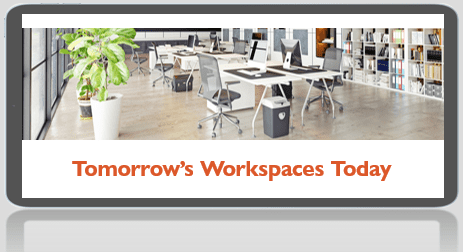Creating the Optimum Workspace for Britain’s SMEs
Bisnow Editor Mike Phillips leads panel discussion at Crown Workspace Breakfast Briefing
Crown Workspace’s Simon Gammell took to the stage on Wednesday 27 June to introduce a panel discussion about creating the optimum workspace for Britain’s SMEs – the ‘missed middle’ businesses.
This breakfast seminar comes hot on the heels of a piece of research we carried out with SME business owners, looking at their workplace needs, along with the issues and opportunities they face when it comes to searching for and fitting out an office.
The Panel
The panel discussion was led by UK BisNow Editor Mike Phillips. Phillips was joined by distinguished panellists James Harrison (partner, BDG Sparkes Porter), Simon Gammell (director, Crown Workspace), Samantha Kopsch (founder, Sam Kopsch Studios), and Hugh Prissick (project manager and founder, Storey).
Phillips led a spirited discussion about the current and future trends in workplace design, the availability of suitable office space for smaller businesses, and how the property and design industries can provide better solutions to the problems SMEs have.
“Build a Sense of Community”
Panellist James Harrison discussed the way in which landlords can provide the best services for their tenants; citing the Blackstone development in Chiswick Park as an innovation. Harrison remarked: “The Blackstone community is fascinating.
They treat their tenants as customers, and have made building a community a priority. They have developed an app that not only connects tenants but offers them a range of services at the click of a button. Such as, the ability to order a coffee and pick it up from downstairs, find out when the next on-site exercise class is, or find a free parking space on site.
“This is something SME landlords (and SMEs themselves) should consider. A contact portal would allow tenants to communicate with landlords as well as one another, building a sense of community and enhancing relationships.”
“Find Creative Solutions”
Simon Gammell focussed on the role of office design and employee retention.
“Attraction and retention in small businesses does depend on the look and feel of the office space. Our challenge as design, build and fit-out specialists, is to find creative solutions for spaces that solve as many office problems as possible.”
“Prioritise Wellbeing and Agile Working”
Approaching these issues in a practical way, designer Samantha Kopsch talked about how SMEs could make the look and feel of designer offices more accessible to their workforce.
“I anticipate that ultra-modern offices like Google and WeWork will die out soon. Design goes beyond a few throw pillows. More prominence is being put on staff wellbeing and agile working. These will become even more of a priority when it comes to office design.
60% of workplace design and fit-out budget will go toward things you never see (acoustics, design aspects) and 40% will go toward aesthetics.”
“A Shift in Space Presentation by Landlords”
Panellist Hugh Prissick considered the issues discussed from the point of view of a project manager.
Prissick offered valuable insight on procurement and how businesses can make the most of their budget. He also commented on how landlords are taking measures to improve conditions for tenants, to attract occupiers for the long term.
“There has been a shift in the way landlords are presenting their spaces. Many large landlords are offering a shell-and-core office option with a cash contribution to fit out the office space. This reduces refit cost, which certainly benefits tenants. Some landlords will offer full fit-outs, and this concierge-style of landlord is sure to become popular and more common.”
The Future of Workspaces
The panel closed with a series of questions from the audience, who were curious about the practical side of redesigning office space. While office design is constantly evolving, the focus of the design is shifting as businesses prioritise employee flexibility and contentment.
Furthermore, there will always be a desire to personalise office space to showcase a business’ personality and brand.
Related stories
At Crown Workspace, our mission is clear: To deliver seamless workplace transformations across the UK. To achieve this efficiently, we rely on a robust, reliable, and safe fleet. That’s why we’re delighted to announce the latest expansion of our commercial vehicle fleet with the addition of 19 new Mercedes-Benz vehicles supplied by our long-standing partner […]
Around half of all Facilities Managers plan to downsize their office space in the next three years. How, and why?
Are offices getting bigger or smaller, and why? Let’s start with the conclusion: The honest answer is that both stories are true. Some organizations are taking up more and larger offices, others are compressing. What ties the two together is a single idea that now sits at the heart of Facilities Management: rightsizing. Size follows […]





























